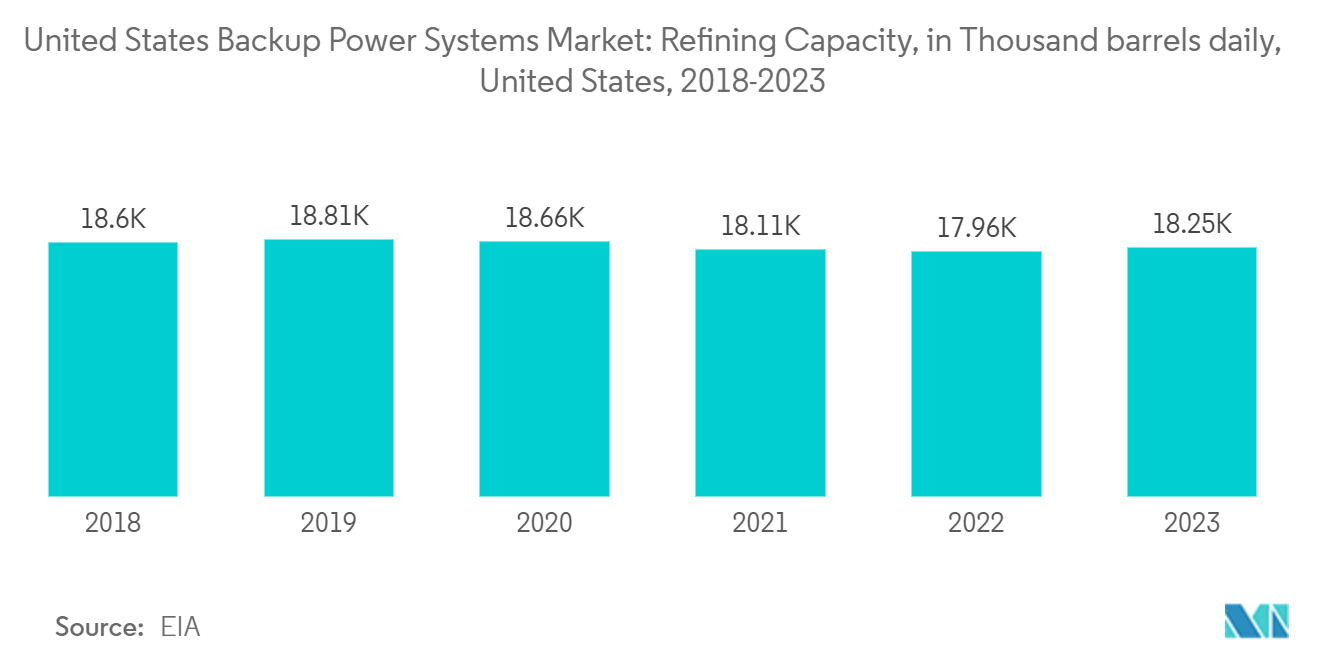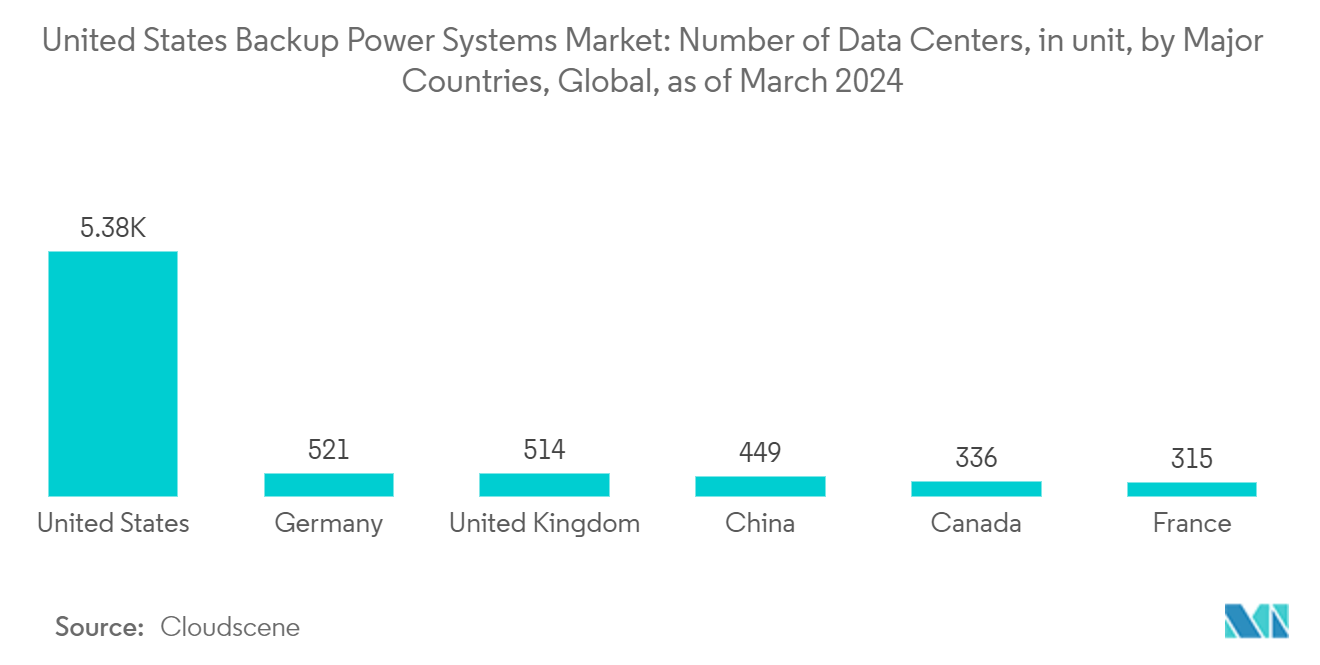Market Trends of United States Backup Power Systems Industry
Uninterrupted Power Supply (UPS) Technology to Witness Significant Growth
- An uninterruptible power supply (UPS), or battery backup, provides backup power when the regular power source fails or the voltage drops to an unacceptable level. A UPS allows for the safe, orderly shutdown of a computer and connected equipment. The size and design of a UPS determine how long it will supply power.
- Different UPS topologies (such as standby, line interactive, and double-conversion) provide specific levels of power protection. Standby UPS is the most basic UPS topology. A standby UPS resorts to battery backup power in case of common power problems such as a blackout, voltage sag, or voltage surge.
- Moreover, interactive UPS models are typically used for consumer electronics, PCs, gaming systems, home theater electronics, network equipment, and entry-to-mid-range servers. They provide power during such events as a blackout, voltage sag, voltage surge, or overvoltage. Also, double-conversion UPS systems are designed to protect mission-critical IT equipment, data center installations, high-end servers, large telecom installations and storage applications, and advanced network equipment from damage caused by a power blackout, voltage sag, voltage surge, over-voltage, voltage spike, frequency noise, frequency variation, or harmonic distortion.
- Uninterruptible power supply (UPS) systems provide critical protection for data centers and telecommunication equipment in mission-critical applications, serving as a source of backup power in the event of a power outage.
- The demand for UPS systems also comes from various process industries, and one of the largest segments is refineries, which require large-scale UPS systems to avoid voltage variations and power backup in harsh conditions. The growth of the oil and gas downstream sector in North America is expected to positively impact the demand for UPS systems during the forecast period.
- According to the Energy Information Administration, as of 2023, the refining operation capacity of the United States amounted to 18,248 thousand barrels per day. Further, the refining capacity of the United States is projected to increase significantly in the coming years, owing to the upcoming projects.
- In January 2023, Exxon planned to start a USD 1.2 billion Texas oil refinery expansion to increase gasoline and diesel production at its Beaumont, Texas refinery. It is the first major expansion to the United States oil processing and will add the equivalent of a mid-sized refinery. Hence, such upcoming projects will likely supplement the demand for UPS systems.
- Companies such as Amazon, Microsoft, and Google have committed to building new data centers in the country, which are highly sensitive and have a high risk of economic losses from downtime. This has translated into higher demand for UPS backup systems in the commercial sector.
- Therefore, based on the above-mentioned factors, the UPS technology segment is expected to witness significant demand for the backup power systems market in the country during the forecast period.

Increasing Infrastructure for Data Centers to Drive the Market
- Data centers are one of the key developing markets in the commercial space in the United States. The United States is the largest market for data centers, which indicates substantial demand potential for backup power systems in the country.
- The United States was one of the world's largest countries for data centers. Major markets include the financial hubs of New York and Chicago, the tech hubs of San Francisco, Seattle, and Portland, the population hubs of Dallas and Los Angeles, and the government center in Washington, DC. With the country's total data center numbers outweighing its nearest market (the United Kingdom) by five times, the United States is also the undisputed "home of the internet," increasing the demand for UPS over the years.
- The requirement for data centers in the country is growing rapidly due to increasing demand for connectivity compared to other factors, i.e., roughly 600 zettabytes of new data are created every year (600 trillion gigabytes). New facilities must handle increasing internet traffic to keep up with growing data.
- Companies such as Amazon, Microsoft, and Google committed to building new data centers in the country, which are highly sensitive and have a high risk of economic losses from downtime. This has translated into higher demand for UPS backup systems in the commercial sector.
- According to Cloudscene, as of March 2024, the United States reported 5,381 data centers, the most of any country worldwide. In addition, the number of data centers is expected to increase in the region as the United States is the fastest adopter of advanced technology such as big data, IoT, and artificial intelligence, and expanded coverage of 5G services across the country.
- In February 2024, NTT DATA, a global digital business and IT services company, announced that TC Global Investments Americas LLC will invest in NTT Global Data Centers' American data center business in Chicago, Illinois. The NTT Global Data Centers Americas' Chicago data center campus will have three data centers and deliver 104MW critical IT capacity.
- Overall, the demand for backup power systems is expected to increase significantly owing to the growth of the commercial sector, driven by the country's data centers.
- Therefore, based on the above-mentioned factors, increasing infrastructure for data centers is expected to drive the backup power systems market in the United States during the forecast period.


